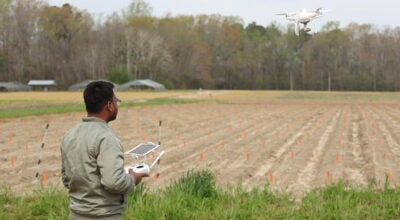Swamp declared climate change stronghold
Published 9:41 pm Tuesday, June 5, 2012

A nonprofit environmental group has named the Great Dismal Swamp, represented here by the burn scar of 2011’s wildfire, a resilient landscape that would withstand the effects of climate change.
The Great Dismal Swamp, a large chunk of which is located in Suffolk, has been cited in a report on natural “strongholds” that could withstand the effects of climate change.
The Nature Conservancy’s Resilient Sites for Terrestrial Conservation in the Northeast and Mid-Atlantic Region includes the swamp among a series of landscapes across Virginia and the northeastern United States that could “help ensure nature’s survival.”
Conservancy Virginia Executive Director Michael Lipford said the named landscapes share a combination of traits under the banners of “complexity and permeability.”
They feature a variety of microclimates that organisms can move between, as well as fewer roads, dams and other development that create barriers against migrating plants or animals, he said.
Lipford said the swamp’s 112,000 acres of conservation lands represent one of the largest contiguous forest blocks on the Eastern Seaboard.
But despite its reported resiliency, the swamp is still susceptible to rising sea levels, he said.
“One of the things that this study did not do is to look at the effects of sea level rise,” he said.
“The areas of south Hampton Roads have some of the highest (predicted) sea level rises, which is something we are looking into for the future.”
Lipton stressed the importance of maintaining the swamp’s connection to surrounding resilient areas.
“It’s important not only to protect the swamp itself … but also to make sure it’s always connected to other resilient landscapes,” he said.
“I think that with careful planning, we would want to make sure that development around the swamp is done carefully so that those connections, particularly to areas to the west, continue to function as resilient landscapes.”
The study, analyzing 156 million acres of land from Virginia to Maine and on into parts of Canada, also recognized as strongholds in Virginia the Dragon Run watershed and other Chesapeake Bay tributaries, as well as the Blackwater and Nottoway rivers.
Examples of resilient landscapes in other states include limestone flats in northern Maine, floodplains in northeastern New York, coastal plains with oak-pine forests in New Jersey, and highland forests in West Virginia.
The Appalachians were also considered important for withstanding climate impacts.
It is hoped the study will be used by government agencies and others to direct conservation activities, a role the conservancy says it is already fulfilling.
“We are excited about this cutting-edge work by The Nature Conservancy and have begun to use it to guide our land conservation grant-making,” Doris Duke Charitable Foundation Program Director Andrew Bowman stated in an email.
“In an era of accelerating climate change and scarce dollars for land conservation, this work will be very helpful to us and others in selecting the most important places to protect.”






